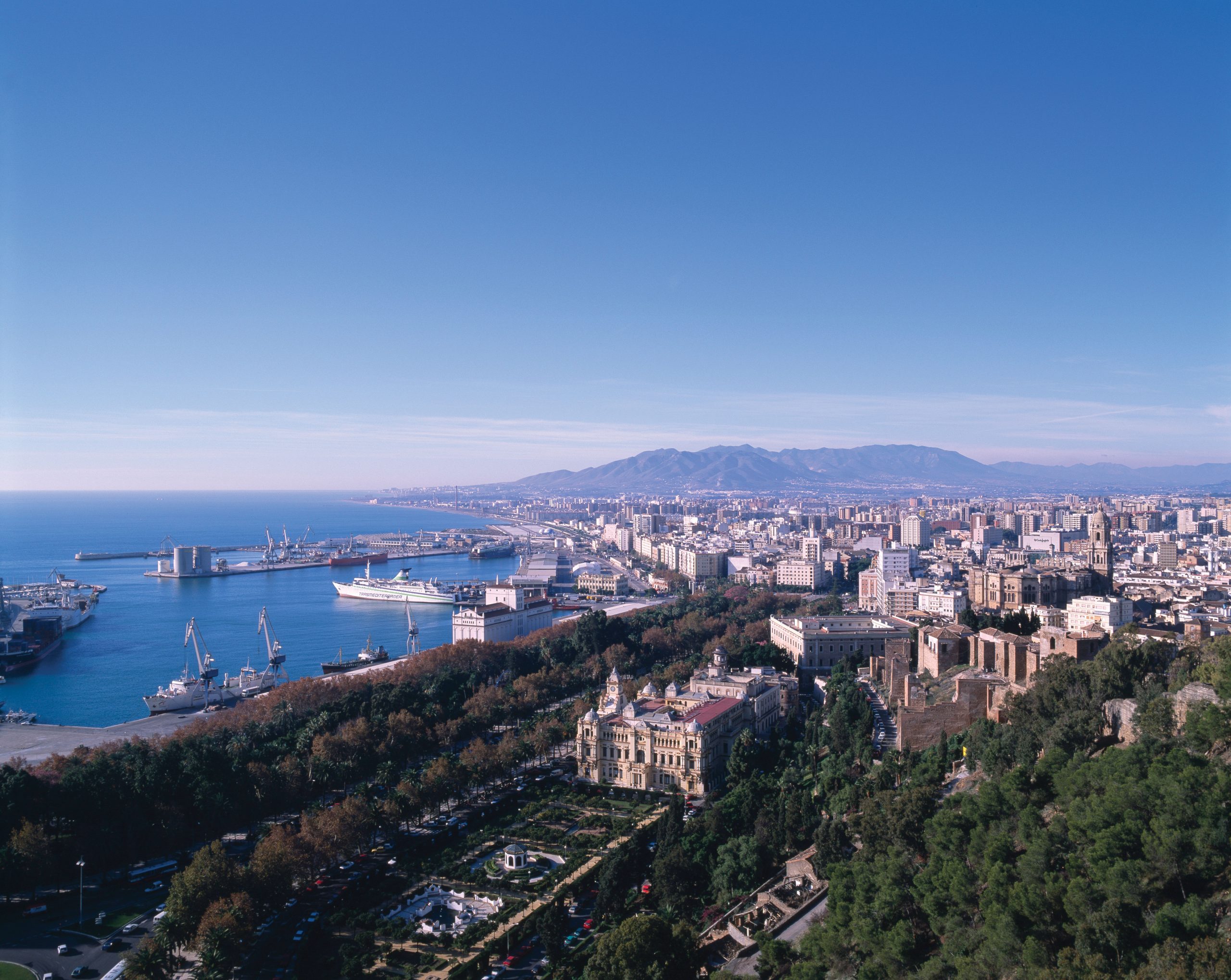The first time I visited the capital of the south coast of Spain, Málaga, some 15 years ago, cultural enrichment wasn’t exactly on my mind. I’ll admit it; I did like many expats in this region and followed my heart (or my Andalusian boyfriend, in this case). The love affair didn’t last very long, but little did I know that it would lead to a far deeper and longer-lasting relationship with what has come to be the city of my dreams.
Most fist-time visitors to Málaga (or those who first move here) tend to spend endless weeks on the beach, toasting their skin to golden perfection and enjoying Málaga’s most famous delicacy: coal-barbecued sardines on a spit, cooked in a fire built in little wooden boats, which grace most of Málaga’s famed frontline restaurants, called chiringuitos. When it comes to chiringuitos, of course, the word ‘restaurant’ doesn’t quite fit; most are informal, meant to be frequented by sand-strewn holidaymakers. Chiringuitos are built on wooden decks, under thatched roofing, a few steps away from the beach. They are the perfect reason to stay seaside all day; whenever one feels parched or hungry, a cool sangria and plate of paella are just a stone’s throw away.
As one matures and the fear of skin cancer takes hold, , priorities begin to change. As what in our mind has always been a sleepy seaside tourist town becomes the place we live, work and build our family in, we seek a more profound connection to its natural landscape, history and culture. In many ways, my decision to live and make my life in Málaga in 1996 coincided with the transformation of this coastal capital into an impressive cultural hub.
If you are a traveller who likes to combine the very best of Nature, culture and shopping, Málaga is an ideal choice. This is a mountainous city, offering keen trekkers and mountain bikers alike a vertiginous experience. The mountains can be enjoyed by children, too; in Benalmádena, a 10-minute drive away from the capital, there is a fun cable car experience that takes you to the summit of one of the most expansive mountain ranges in the area. From above, you can view the beauty of the coastline and enjoy an amazing falconry show featuring wild eagles, hawks and the like. Following your descent, few things could be better than heading for the beach and enjoying a hearty lunch.
One of the best things about the South of Spain is how far your dollar or pound goes here. Many venues offer a three-course meal (including a glass of wine) for under £8, though if you’re after a gourmet experience, you should probably head for Marbella – 30-minute car ride from Málaga, Marbella is a famed destination for high-end residential tourism and it boasts everything the discerning travel could demand, including gourmet restaurants. For a true taste sensation, try two-Michelin-starred Chef, Dani GarcÃa’s new restaurants at the Puente Romano Hotel. The first of these, Dani GarcÃa Restaurant, offers an amazing tasting menu inspired on the world of fairytales. The second, Bibo, is a haven of gourmet tapas whipped up with revolutionary techniques, including the use of liquid nitrogen to ‘freeze’ sorbets that melt ever so slowly in the mouth. Marbella has its own Rodeo Drive on the luxurious port of Puerto Banús, with stores such as Louis Vuitton and Jimmy Choo attracting affluent shoppers from around the world. Budget travellers need not fear spending more than they can afford, however; if one’s focus is cultural rather than material, there are many museums and galleries to keep you occupied. Let’s whiz back to the city centre of Málaga, where you will find these treasures:
- The Málaga Car Museum: Launched in 2010, this museum is dedicated to art on wheels: keen motorists will find over 90 classic cars, hailing from the collection of avid car buff, Joao Manuel Magalhaes. www.museoautomovilmalaga.com
- The Carmen Thyssen Museum: Famed art collector, the Baroness Carmen Thyssen, ceded an extensive part of her impressive collection of 19th century Andalusian themed to the province of Málaga, to enable the opening of the Carmen Thyssen Museum. This is a great museum to visit in under an hour, since the collection is presented in such a way that it is very easy to appreciate the stylistic and thematic development of art in the 19th century. Early works are highly stylised at first, then progress into a more realistic style. Finally, the focus of the paintings is more on cosmopolitan subjects rather than regional ones. www.carmenthyssenmalaga.org/en
- The Glass and Crystal Museum: If you have just one day to visit a museum, let it be this one. Housed in an old Andalusian mansion in the very heart of the city, it contains the private collection of Cambridge scholar, Dr. Gonzalo Fernandez Prieto, who gives tours of his extensive collection in both English and Spanish. There are over 3,000 pieces to wow at, though what really makes the visit special is Fernandez Prieto’s wit and sheer passion for glass and crystal. Discover delightful historical facts, anecdotes and information about the ancient art of glass and crystal design and manufacture. www.museovidrioycristalmalaga.com/
- The Contemporary Art Centre: This museum is one of the most impressive in terms of size, since it contains a vast number of artworks from the 20th and 21st centuries and has housed exhibitions by some of the world’s most renowned artists, including Louise Bourgeois or Ron Mueck. www.cacmalaga.org
- The Picasso Museum of Málaga: Picasso is arguably Málaga’s famous son (alongside Antonio Banderas). View over 230 of the artist’s works, donated by his family. www.museopicassomalaga.org
- Last but not least, do pay a visit to the Cervantes Theatre, 19th century jewel which offers fantastic opera, dance and music performances. www.teatrocervantes.com. If you are travelling with kids, take them to a theatrical performance at the Teatro Echegaray. www.teatroechegaray.com
This post was written by Susie Collins


John Halsey liked this on Facebook.
Rosemary Morroll liked this on Facebook.